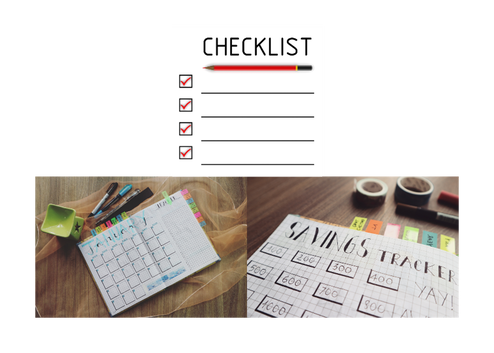Exclusive Access Granted To Our Blog!
|
You know that low-content products can help boost income and generate leads, but you’re not sure where to start. Any business can create and sell a low-content product. Popular formats can be customized to suit any industry, niche, or business – even yours. What all Customers/Clients Have in Common Low-content products have universal appeal because, as people, we share these things in common:
Think about these motivating factors as you customize your own low-content product. Here are three of the most popular low-content products and specific ways you can customize each to suit your business. Planner People love planners (or, at least, the idea of them). There are several ways you can customize planners suit any business and audience. Theme: What is your niche? What product or service do you provide? Add your unique stamp to the planner by personalizing it. For example, if you are a career coach specializing in midlife transitions, you can create a planner called ‘Your Midlife Transition Planner’. Layout/Design: What imagery or fonts would your audience be more receptive to? What would work best with your brand, niche, and industry? For example, if you provide executive coaching, a floral theme with an elaborate script font might not be appropriate. Content: Common elements in planners can include a to-do section; condensed monthly calendar; daily, monthly, or weekly targets or priorities; appointments; gratitude list; and more. Think about the elements you want to include and how you can put a personal, brand-relevant spin on them. Checklists Checklists are a valuable tool to keep people on track. They are also very simple to create. Theme: Again, focus on your niche. What product or service do you provide? Create a checklist based on a process you typically use, or for a specific task or list relevant to your niche. For example, if you are a life coach who specializes in cultivating an abundance mindset, you might create the ‘Positive Morning Routine’ checklist. Layout/Design: Use fonts, graphics, and colors that suit the theme and audience. If the checklist is aspirational or inspirational, you can let your imagination run a bit wild. If it’s a task-oriented checklist, keep it more traditional and professional. Content: Depending on your topic, the checklist could be as simple as a tick box next to each item on a list. If you are creating a checklist for a complex process, add columns next to each task. For example, columns for quantity, time, or notes. Tracker Theme: Create a tracker based on goals you want your target audience to measure and complete. For example, if you are a career coach, create a habit tracker or business development tracker. Layout/Design: As in all your low-content pieces, incorporate your branding into the tracker. That way, if it’s shared, or appears on Google Images, people know who created it. Stick to your brand colors so it will seamlessly integrate into other pieces or promotions. Content: Incorporate methods of measurement and rewards that are relevant to your niche. For example, if you are career coach helping people with behavioral changes, add a progress bar to the tracker to motivate them to keep going. Pat Simes is a Business Strategist, blogger and Founder of Innovative Business Solutions and Innovate Academy. She currently resides in the Midwest and is committed to inspiring and empowering entrepreneurs to transform their vision to reality. Website: providing-innovation.com
0 Comments
Your comment will be posted after it is approved.
Leave a Reply. |
AuthorPat Simes Archives
July 2024
Categories
All
|

 RSS Feed
RSS Feed